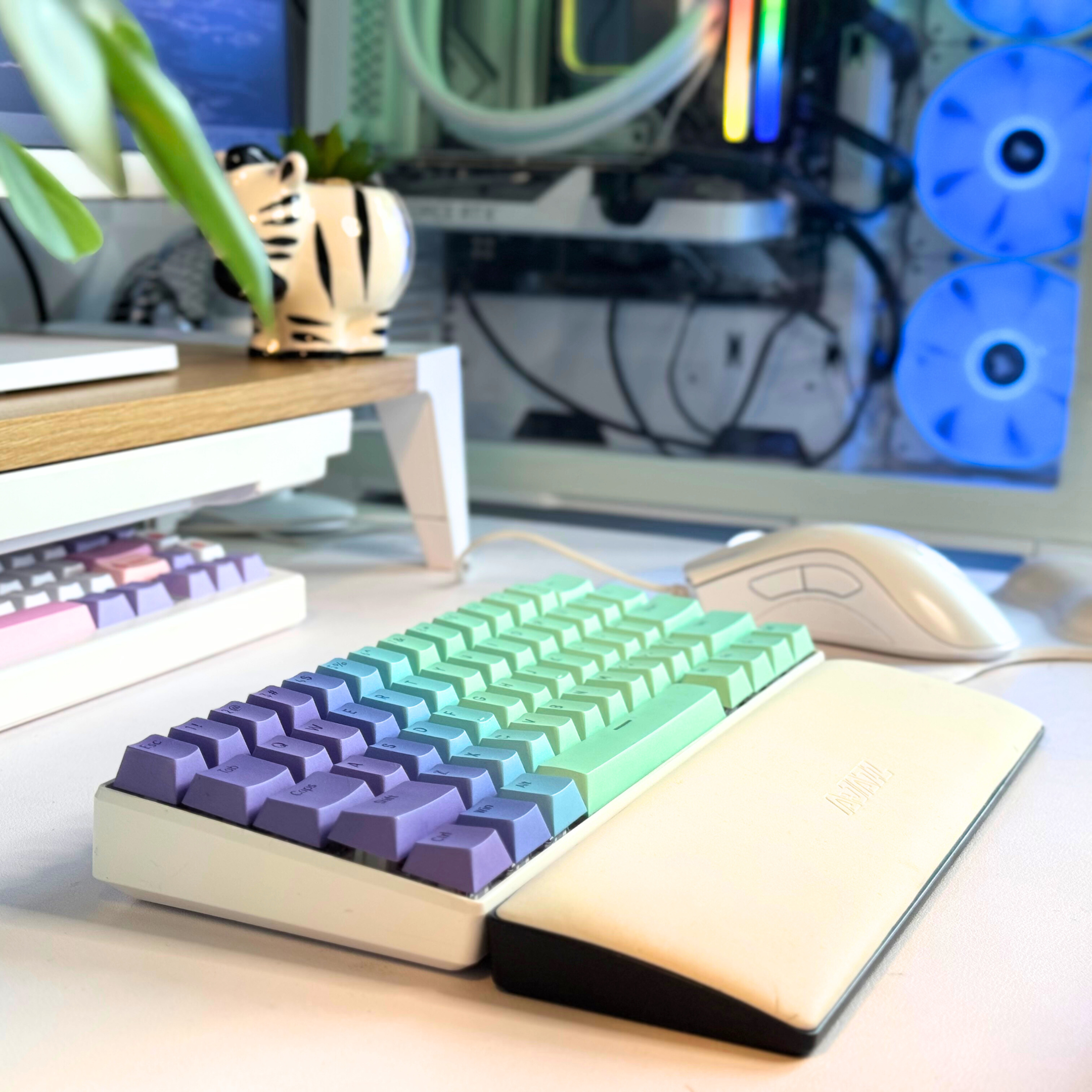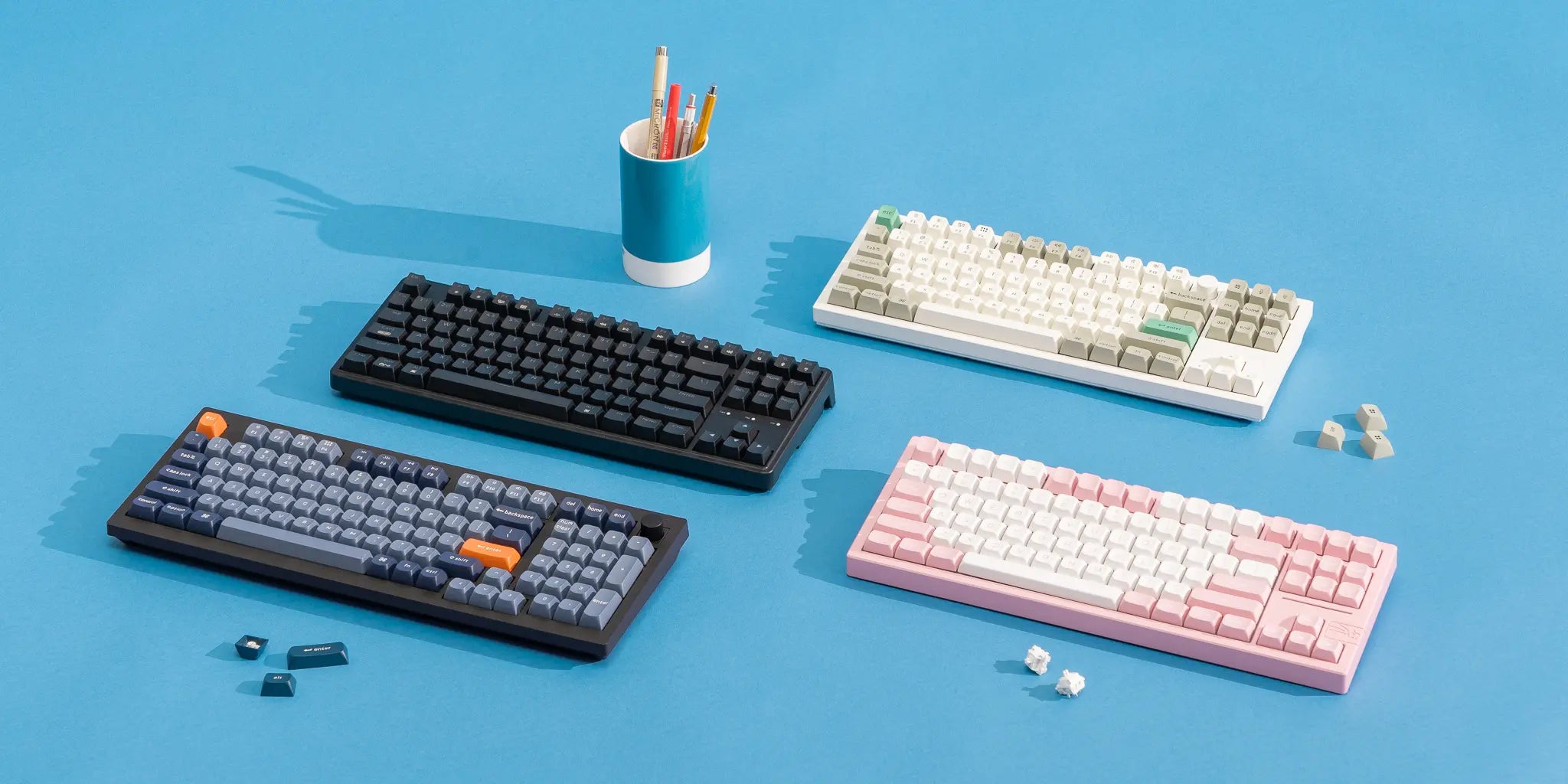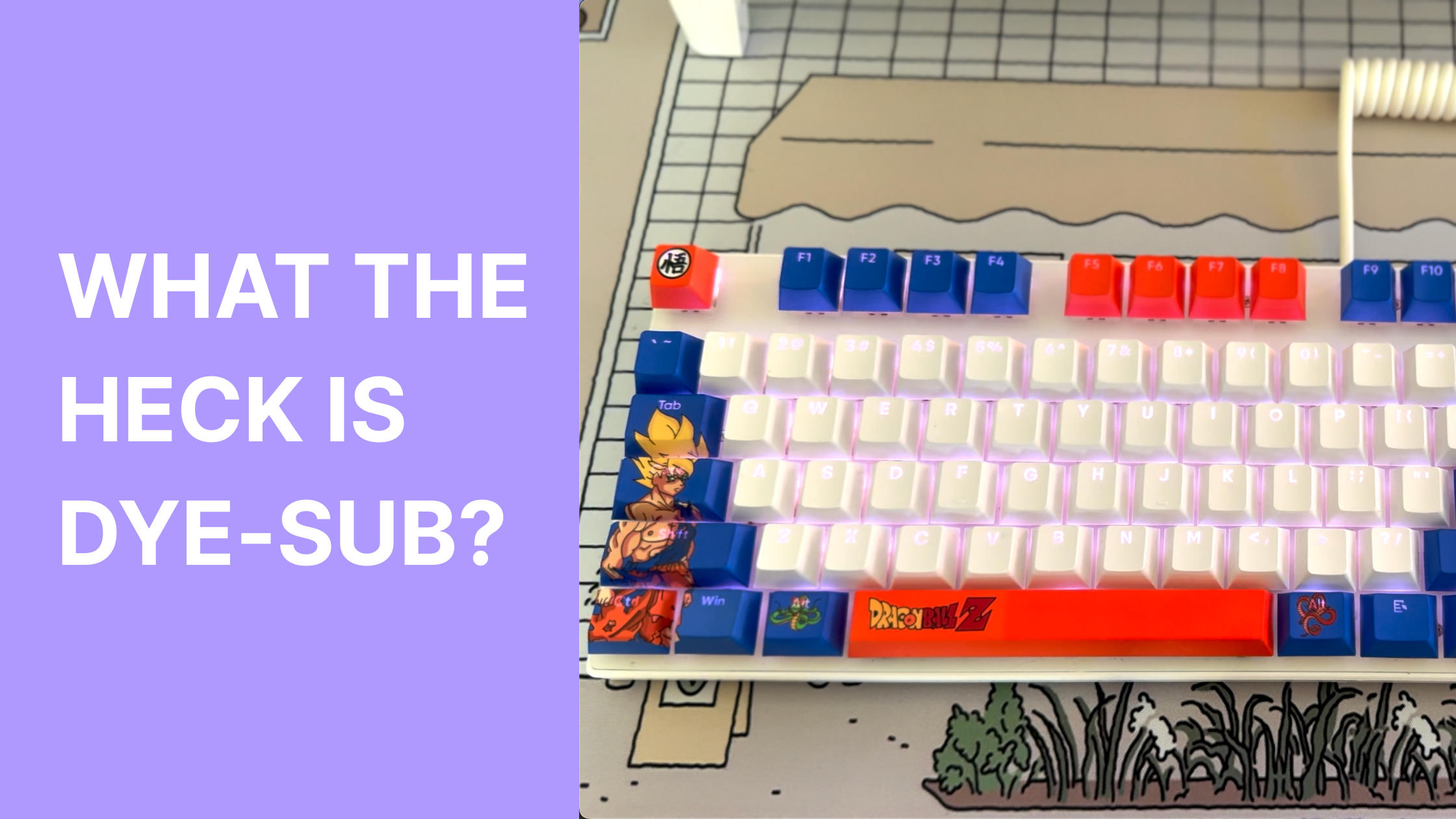Choosing the Perfect Switch for Your Typing Needs
When it comes to mechanical keyboards, one of the most significant factors influencing your typing or gaming experience is the type of switch beneath each keycap. Keyboard switches come in various types, each offering unique tactile feedback, actuation force, and sound profile. Understanding these differences is essential for selecting a keyboard that fits your preferences and needs.
This guide will walk you through the various types of keyboard switches, their mechanics, features, benefits, and tips for choosing the right one.

What Are Keyboard Switches?
A keyboard switch is the essential mechanism beneath each keycap that registers keystrokes. Unlike membrane keyboards, which use pressure pads, mechanical keyboards utilize individual switches for each key. This design provides a more precise, responsive, and customizable typing experience, with switches rated for tens of millions of keystrokes.
Types of Keyboard Switches
Mechanical switches fall into several categories based on their feel and sound:
- Linear Switches
- Tactile Switches
- Clicky Switches
- Magnetic Switches
- Optical Switches
Each type offers a unique experience suited for different users.

1. Linear Switches

Pictured: Akko Mirror Switches
How They Work
Linear switches provide a consistent keystroke without any tactile bump or audible click. The stem moves smoothly downwards, compressing a spring and closing the circuit upon reaching the actuation point. Some typists may find the lack of tactile feedback less satisfying, potentially leading to a softer or less defined feel.
Best For:
Gamers who need fast, repeatable keystrokes.
Popular Linear Switches
- Cherry MX Red
- Gateron Yellow
- Akko Mirror
- Kailh Red
Pros and Cons
| Pros | Cons |
|---|---|
| Fast and responsive | Lack of tactile feedback |
| Quiet and smooth | Can feel "mushy" to typists |
2. Tactile Switches

Pictured: Akko V3 Lavender Purple Pro Switch
How They Work
Tactile switches contain a bump in the stem design. When pressed, the bump creates a brief resistance, giving users physical feedback that the key has actuated without needing to bottom out.
Best For:
Typists or users who prefer a responsive feel without the noise.
Popular Tactile Switches
- Cherry MX Brown
- Gateron Brown
- Holy Panda switches
- Akko CS Lavender Purple
- Zealios
Pros and Cons
| Pros | Cons |
|---|---|
| Clear actuation feedback | Slightly louder than linear |
| Good for typing | Not ideal for rapid gaming |
3. Clicky Switches

Pictured: Akko Creamy Cyan Switches
How They Work
Clicky switches have a mechanism that creates a tactile bump and an audible click. Typically, this is achieved by a jacketed click bar or an internal leaf that snaps during actuation.
Best For:
Users who enjoy strong tactile feedback and sound.
Popular Clicky Switches
- Cherry MX Blue
- Kailh Box White
- Razer Green
Pros and Cons
| Pros | Cons |
|---|---|
| Satisfying clicky feedback | Loud – not great for shared spaces |
| Great for heavy typists | Can be fatiguing in long sessions |
4. Magnetic Switches (Hall Effect)

Pictured: Akko Astrolink Magnetic Switches
How They Work
Magnetic switches, often referred to as Hall Effect switches, use a magnet and a sensor to detect actuation. As the stem moves, it alters the magnetic field, which is detected by a sensor. These switches allow for adjustable actuation points, making them highly customizable for gaming or typing preferences. Actuation is contactless so they don’t physically wear out from actuation, however some physical wear like spring fatigue may still develop with extended use.
Best For:
Gamers or professionals who want fully adjustable key sensitivity.
Popular Magnetic Switches
- Gateron Magnetic Hall Effect
- Wooting Lekker Switch
- SteelSeries Omnipoint 2.0
Pros and Cons
| Pros | Cons |
|---|---|
| Adjustable actuation sensitivity | Typically limited to specific boards |
| Smooth, contactless operation | Higher cost |
| Long lifespan | Less variety across brands |
5. Optical Switches

Pictured: Razer Huntsman Mini Red Optical Switches
How They Work
Optical switches use light to detect keystrokes instead of metal contacts. When a key is pressed, the stem interrupts or reflects an infrared beam, signaling actuation. This design eliminates the need for debounce delay entirely, offering slightly faster response times -especially valuable in competitive gaming. Optical switches are rated for 100M+ keystrokes, although some magnetic switches claim virtually unlimited actuation cycles.
Best For:
Gamers looking for lightning-fast response times and minimal input lag.
Popular Optical Switches
- Razer Linear / Clicky Optical
- Gateron Optical Yellow
Pros and Cons
| Pros | Cons |
|---|---|
| Faster actuation | Not compatible with all PCBs |
| Longer lifespan (100M+ presses) | Fewer switch options available |
| No debounce = instant signal | Often restricted to prebuilt boards |
Note: Optical switches often require specially designed PCBs, limiting modding or switch swapping on standard mechanical keyboards. These switches are NOT compatible with the keycaps we offer here at shopgalactica.
Specialty Switches and Innovations
Silent Switches
These include silent versions of linear or tactile switches, using dampeners to reduce noise:
- Cherry MX Silent Red
- Gateron Silent Brown
- Akko Silent Linear
Ideal for creating a quiet mechanical keyboard.
Low-Profile Switches
Used in slim keyboards for portability. Less travel distance, but maintain tactile or linear characteristics.
Factors to Consider When Choosing your Switch Type

1. Typing vs. Gaming
- Typing: Go for tactile or clicky.
- Gaming: Linear or magnetic are best.
2. Noise Level
- Quiet environments: Silent switches or linears.
- Personal use: Clicky may be fine.
3. Actuation Force
- Lighter switches (e.g., Cherry MX Red) are less fatiguing.
- Heavier switches provide more control.
4. Durability
- Optical and magnetic switches often outlast traditional ones.
5. Customizability
- Consider hot-swappable keyboards to test different switches easily.
Final Thoughts

Pictured: Akko Green Fog Switch
Whether you're building your dream gaming keyboard, assembling a silent mechanical keyboard for work, or just trying to find the perfect feel, the right switch makes all the difference. From smooth linears to clicky tactiles, and cutting-edge magnetic and optical switches, there’s a perfect fit for everyone.
We’d love to hear your thoughts! Have a favorite switch or keyboard setup? Share it in the comments, and feel free to browse our keycap collection for that perfect finishing touch.








Leave a comment
All comments are moderated before being published.
This site is protected by hCaptcha and the hCaptcha Privacy Policy and Terms of Service apply.